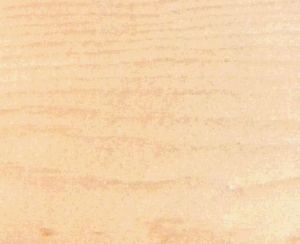Ezomatsu
Picea JezoensisSoftwood
Family: Pinaceae
In Japan, this species distributed in Hokkaido is called "Ezomatsu" including acacia pine which is closely related. It is distributed in commerce as "Ezo Todo" together with Todomatsu. Durability of this wood is high and this is a useful species in a cold district. It is designated as "tree of Hokkaido."


FEATURES
There may be not much difference in color between the heartwood and the sapwood, but the heartwood is in pink and it has fine texture. With the time after cutting, the color becomes darker. The wood grain goes straight and is beautiful, and it is often used for building materials. There is also a characteristic of having almost no smell. Although it has an axially intercellular canal (resin canal), "resinous exudate" does not much seep out on the material surface.
USAGE
The species is used as building materials, fittings, pulp, wood wool, paper‐thin sheets of wood and even for musical instruments. Houses in Hokkaido are built using Ezomatsu and Todomatsu, which is very common in Hokkaido. In addition, because the acoustic characteristics fits well with instruments, the lumber is used for violin, piano and other instruments. It also becomes pulp material used for the cone of the speaker. In addition to afforestation, it is planted as windbreak forest, park tree, or garden tree.
Charactristic Table
| Specific gravity in air-dry |
Mean comefficient shrinkage for 1% change of moisture content(%) |
Surength(Mpa) | Modulus of elastcity in bending(GPa) |
|||
|---|---|---|---|---|---|---|
| Radial direction | Tangential direction | Bending surenght | Longitudinal compressive Surenght |
Shear strength parallel to grain |
||
| 0.43 | 0.15 | 0.29 | 69 | 34 | 6.9 | 8.8 |


